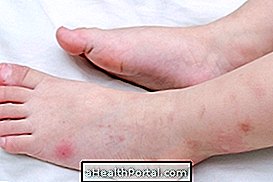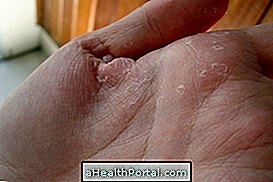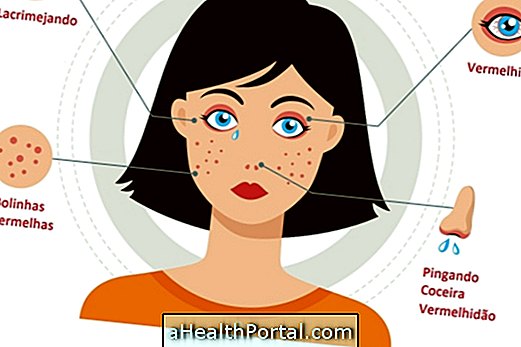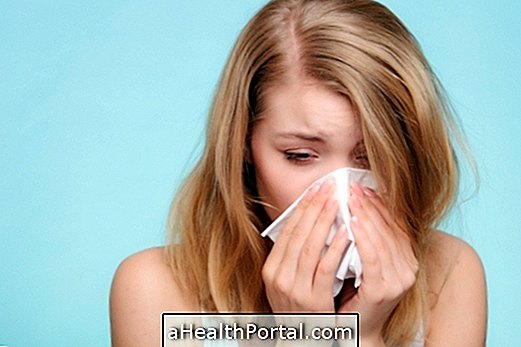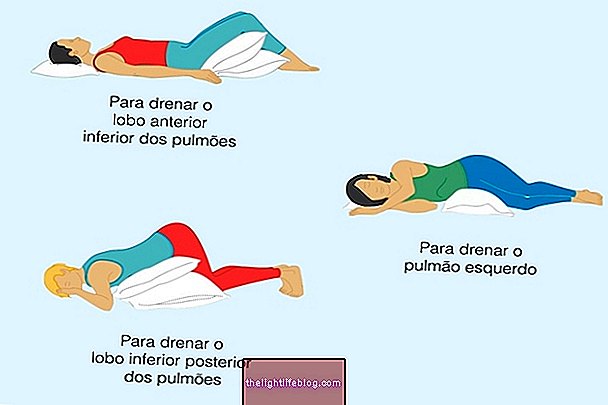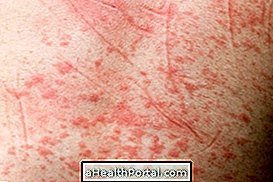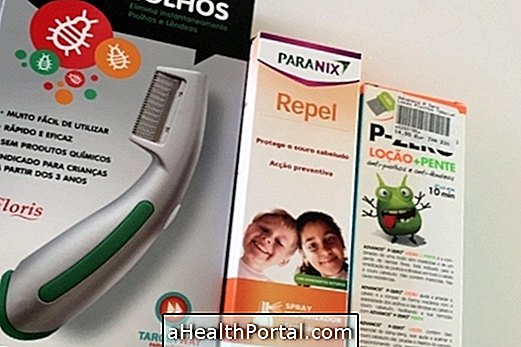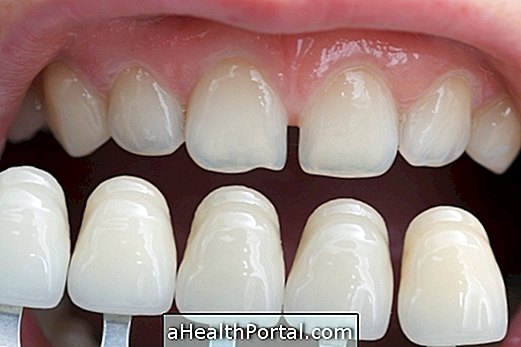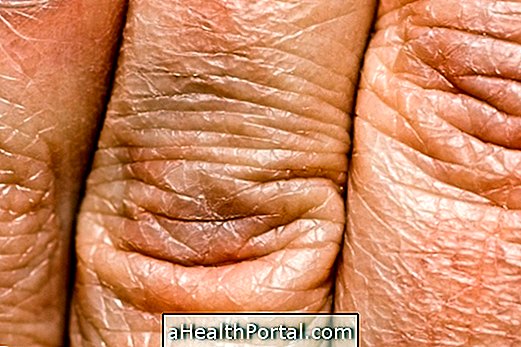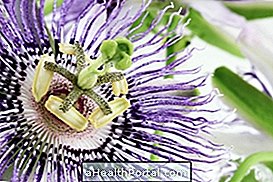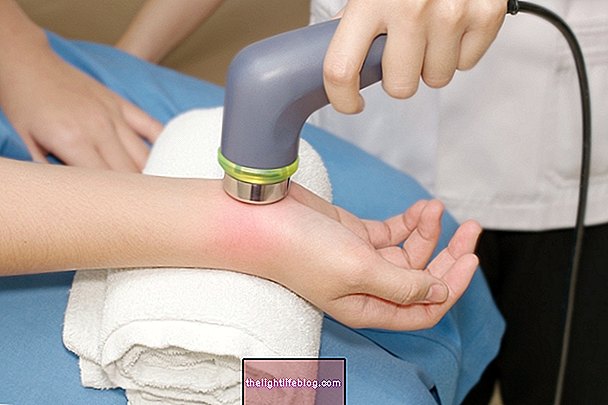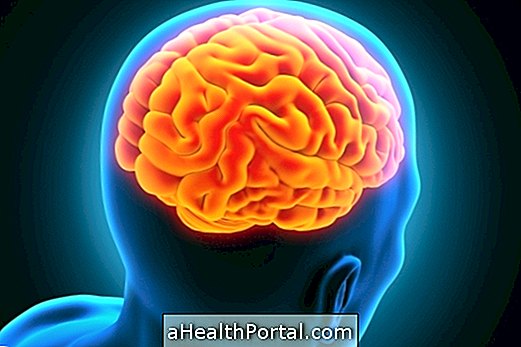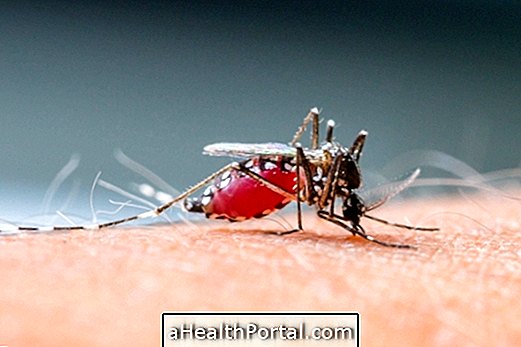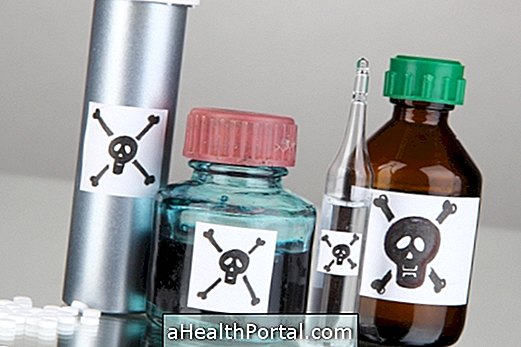Symptoms of cold allergy can occur when the person is exposed to the cold in the fall or winter, but can also occur in summer when the person enters a waterfall or is on the beach and the sea has very cold water, as in the Rio de Janeiro and São Paulo.
This type of allergy can also affect people who need to work in the butcher's refrigerator, in the frozen section of the supermarket or in laboratories where it needs to be at low temperatures, for example. Symptoms usually come a few minutes after exposure to cold or prolonged contact with cold water. Understand how cold weather affects health.

Symptoms of cold allergy
Symptoms that may indicate allergy to cold, a situation scientifically called perniosis or cold urticaria, may be:
- Reddish or yellowish plaques in areas exposed to cold;
- The affected region may look without blood;
- Swollen toes and toes;
- Feeling of pain and burning;
- Itchy skin, especially on the extremities of the body;
- Wounds and scaling may appear on swollen and red skin;
- Vomiting and abdominal pain may occur.
Women are most affected and the most affected areas are hands, feet, nose and ears. A similar disease is Raynaud's Syndrome, a disease characterized by altered blood circulation of the hands and feet, changing the coloration of these limbs. Learn more about Raynaud's Syndrome.
The diagnosis of cold allergy is made from the analysis of the symptoms described by the person, in addition to exams, such as biopsy, for example, that aims to evaluate the lesions. Understand what the biopsy is and how it is made.


Treatment for allergy to cold
When allergy to cold is very frequent and the symptoms remain for days, causing discomfort to the person's life, it is recommended to seek medical help because it may be necessary to perform tests that may indicate that there is another condition at the same time. The most indicated doctor is the dermatologist who can indicate the use of vasodilator remedies.
Other cold allergy treatment options include:
1. Warm up the body
As soon as the first signs of cold allergy are noticed, it is important to warm the region of the affected body as soon as possible to prevent the progression of symptoms. If you are on the beach, for example, you can wrap yourself in a towel or canga and stay in the sun for a few moments until the blood circulation is normalized and the skin stops scratching and disinfection.
For people who live or work in cold environments, it is important to protect the extremities of the body through the use of gloves and boots, for example. In addition, it is indicated not to smoke and avoid the consumption of alcoholic beverages, as they can worsen the allergy symptoms.
2. Exercise regularly
The practice of regular exercise is important to stimulate blood circulation and decrease the chances of allergy. In addition, exercise helps normalize blood flow and the temperature of the allergy site.
3. Use of medicines
The use of antihistamine medication can be done with the aim of controlling seizures and avoiding complications such as blockage of the airways and consequently suffocation, for example. The use of these medicinal products should be recommended by the doctor and are usually consumed in doses higher than normal.
4. Use of adrenaline
The use of adrenaline is only done in more severe cases, when there is a chance of cardiac arrest and complete blockage of breathing, which can happen when the person has an allergy, but nevertheless stays a long time in the frozen water of the sea or the waterfall, for example. Know the effects of adrenaline in the body.
How to live with cold allergy
It is important to avoid all the factors that can lead the person to feel cold. So it should be important to ensure that the body remains warm and dry, avoiding travel to very cold places, such as winter in Europe, avoid popsicle or ice cream suckling, take baths always lukewarm, prefer closed shoes because even the use of an open shoe or sandal can lead to the development of symptoms on the toes, when walking on a shore, on a colder day, for example.
Cold urticaria is not permanent but after the first symptoms appear the person should have these care for the next 10 years.
Possible Complications

If the person does not follow the recommendations and does not perform the treatment, complications can arise due to lack of blood in small areas of the body like the necrosis, which is characterized by the blackened coloration of the affected region and that hardly has cure, and amputation is usually performed .
In addition, the lack of treatment can cause cellulite, which is inflammation of an area of the body, nerve damage, thrombophlebitis, cardiac arrest and blockage of the respiratory tract.

